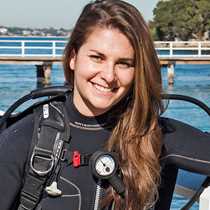There are few places on the planet as spectacular as the Weddell Sea. Visiting this part of Antarctica is often synonymous with little sleep. Our adventures here began late last night, when we were lucky to spot a group of Type B killer whales. Their exhales were audible in the calm waters and the sky slowly turned red as the sun set behind tabular icebergs on the horizon. It wasn’t long before we were woken up by the sounds of the National Geographic Endurance navigating through sea ice early in the morning. All eyes were on the lookout enjoying the scenery as we made our way towards Snow Hill Island. Parking into the fast ice, we had the perfect setting for Naturalist Carl Erik Kilander to tell the story of Ernest Shackleton and the original Endurance. We rugged up to spend the morning in the sunshine walking on the fast ice, enjoying amazing views of the ship, toasting with champagne, and the company of curious Adelie penguins and snoozing crabeater seals. To make the day even more perfect, we were treated to an awesome burger-day BBQ lunch – a luxury Shackleton and his crew certainly never experienced while in this location – just before spotting an Emperor penguin on an ice floe. As we cruised north out of the Weddell Sea and Antarctic Sound in the evening we enjoyed our last views of tabular icebergs and the Antarctic continent, ready to continue on our journey in the Southern Ocean.
- Daily Expedition Reports
- 24 Nov 2021
Weddell Sea & Snow Hill Island, 11/24/2021, National Geographic Endurance
- Aboard the National Geographic Endurance
- Antarctica
Maya Santangelo, Undersea Specialist
Maya was born and raised in Southern California, where her curiosity for the natural world was encouraged from an early age. Relocating to Sydney, Australia with her family at 11 years old, she learned to scuba dive, eventually becoming a PADI Instru...
Read MoreShare Report
Antarctica, South Georgia and the Falklands
VIEW ITINERARYRelated Reports
3/10/2024
Read
National Geographic Resolution
New Island, Falkland Islands
With determination and a pinch of sorcery, expedition leader Bud Lehnhausen somehow found some great weather where lousy weather was forecast. On a day when the possibility of any landing was uncertain, we managed two! New Island is on the very west edge of the Falklands Archipelago, and there are two harbors on the east side that offer great protection from the swells of the Southern Ocean. With sandy beaches and rolling hills, the island offers a great diversity of wildlife and scenery. Highlights of our two landings included gentoo penguins, Magellanic penguins, black-browed albatross, and a good variety of ducks, geese, and shore birds. Tonight, we head west across the Southern Ocean towards the Beagle Channel and Ushuaia.
3/10/2024
Read
National Geographic Endurance
Port Egmont, Saunders Island
Today turned out to be stunning, from beginning to end. It began with a gorgeous sunrise – the huge sky was lit up with resplendent reds, oranges, and yellows, giving way to blues and indigos. The seas calmed as we made our way to Saunders Island. The first part of the morning was spent walking from Port Egmont to the main settlement. Port Egmont was the first British settlement in the Falkland Islands. The British were unaware of the French settlement at Port Louis on East Falkland, which was founded the year before in 1764. At the main settlement, we were treated to demonstrations of sheepshearing, a working sheepdog, and wool sorting. After wandering around for a bit, we headed to the landing area for lunch. This was a special affair – a lamb barbecue with copious salad choices and, of course, complemented with drinks. In the afternoon, we landed on a vast, stunning beach and walked to observe colonies of black-browed albatrosses, rockhopper penguins, and blue-eyed shags. It was a sensational afternoon. Today gave us a much clearer idea of what life is like in the "camp."







